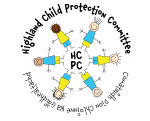Thankfully, the majority of children and young people don’t experience abuse or neglect. However, for those who do it is vital that they receive the right help at the right time. People within our communities often have information which professionals may not be aware of – the missing pieces of a jigsaw. We rely on our local communities to help us identify and respond to children at risk of harm.
Would you know what to do if you are worried about a child or young person?
Don’t assume someone else will have already done something if you’re concerned. You can report your concerns to a Social Worker, Health Visitor, Teacher or any other professional working with children. If you think a child is at risk of immediate harm, please phone the Police.
It is everyone’s responsibility to protection children
Most children grow up loved and well cared for. However, for a variety of reasons sometimes a child may be hurt or mistreated in a way that is likely to cause them significant harm. In such cases it is important that the child and their family receive help and support to ensure that the child is properly cared for and protected.
All adults have a responsibility for the safety and wellbeing of children and young people, and to ensure they are healthy, happy and protected from harm.
This includes:
- parents
- family members
- friends
- volunteers
- professionals
Do I have to give my details when reporting a concern?
The information you have about the child is one piece of a jigsaw. If you do not share your concerns a vital piece of the jigsaw may be mmissing and this could make it harder for them to protect the child. You do not need to give your name, although this may cause difficulties in establishing whether or not a child is at risk of abuse. If you do give your name, this will be treated with discretion. Any details received, including your name, will not be revealed unless the child’s safety requires it. However, we cannot guarantee that you will remain anonymous.
What might I might concerned about?
There are may different reasons why a child would be considered at risk of abuse and neglect. There are different forms of abuse which may make you concerned. Some such as physical abuse may be easier to identify as they can involve hitting, shaking, burning, drowning, cutting; while with physical neglect the signs can be a child who is under fed, poorly clothed and poor hygiene. Other abuses such as sexual abuse may be more difficult to identify unless you have directly observed the abuse taking place. Some signs would be inappropriate sexual behaviour or language, whereas with emotional abuse it could be a child who feels frightened or in danger, a child who is constantly criticised, ignored or humiliated.
There will seldom be one single reason why you would have concerns. More often it will be several signs which on their own seem to be relatively unimportant but when you look at them alongside other circumstances in the child’s life they cause you to be concerned.
Children rarely tell if they are being abused. However, there may be signs which make you concerned and may be an indication of a child being abused or neglected.
The child may:
- have unexplained bruising or bruising in an unusual place
- appear afraid, quiet or withdrawn
- appear afraid to go home
- appear hungry, tired or unkempt
- be left unattended or unsupervised
- have too much responsibility for their age
- be acting in a sexually inappropriate way
- be misusing drugs or alcohol
The adult may:
- be acting in a violent or sexual manner towards a child
- be misusing drugs or alcohol while caring for a child
- be struggling to manage mental health issues
These are some examples of what might make you worried,or you may know of other things that are happening which mean you need to take action to protect the child.
What happens after I report my concerns?
It may not be possible to give you information about what action is taken, as this is personal information relating to the child. However, all information received is treated seriously and will be acted upon. This might include:
- checking agency records and gathering information
- speaking to the child and family and assessing the situation
- making sure the child is safe
